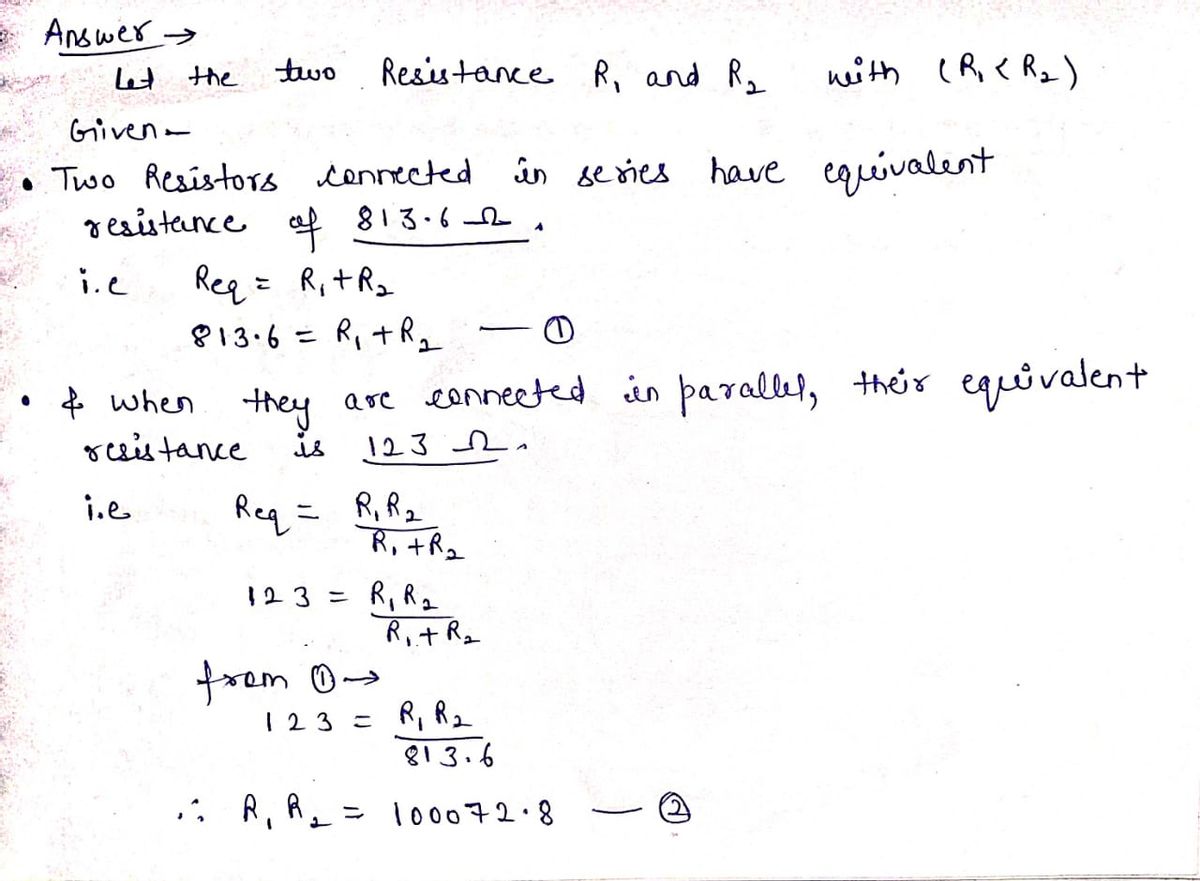Two resistors connected in series have an equivalent resistance of 813.6 Q. When they are connected in parallel, their equivalent resistance is 123 N. Find the resistance of each resistor. X n (small resistance) 2 (large resistance)
Two resistors connected in series have an equivalent resistance of 813.6 Q. When they are connected in parallel, their equivalent resistance is 123 N. Find the resistance of each resistor. X n (small resistance) 2 (large resistance)
Related questions
Question

Transcribed Image Text:**Problem Statement:**
Two resistors connected in series have an equivalent resistance of 813.6 Ω. When they are connected in parallel, their equivalent resistance is 123 Ω. Find the resistance of each resistor.
**Inputs:**
- (small resistance) Ω
- (large resistance) Ω
**Explanation:**
- The series connection total resistance is the sum of both resistors: \(R_1 + R_2 = 813.6 \, \Omega\).
- The parallel connection total resistance is given: \(\frac{1}{R_1} + \frac{1}{R_2} = \frac{1}{123} \, \Omega\).
**Hints:**
1. Use the formula for series resistance: \(R_{\text{series}} = R_1 + R_2\).
2. Use the formula for parallel resistance: \(\frac{1}{R_{\text{parallel}}} = \frac{1}{R_1} + \frac{1}{R_2}\).
3. Solve these equations to find \(R_1\) and \(R_2\).
**Input Boxes:**
- Ω (small resistance)
- Ω (large resistance)
**Status:**
- Incorrect (as indicated by the red cross next to the first input box).
Expert Solution
Step 1

Step by step
Solved in 2 steps with 2 images
